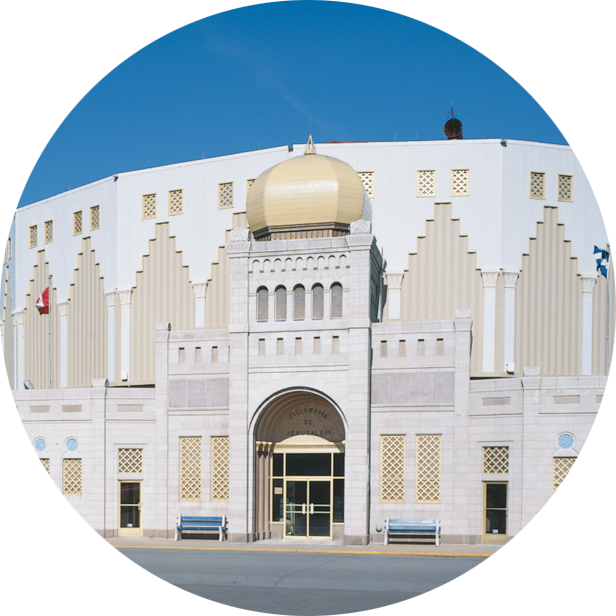
THE CYCLORAMA OF JERUSALEM
was conceived by an eminent German painter, Her Bruno Piglhein.
Already more than a century ago, this Munich painter decided that something should be done about public ignorance of daily life in Biblical times. Though many religious paintings existed, they rarely gave a historical idea of dwelling, customs and clothing during this time.
The painter envisaged an unbroken panorama which would convey the sense of reality to an episode, not just another religious painting, but a canvas that would bring alive a period of time.
What more suitable episode than the Crucifixion? So grew the idea of a panorama of the events happening throughout the City of Jerusalem and the surrounding countryside on that memorable day.
After studying everything available from that period, the German artist realized that he would have to go to Jerusalem. Accompanied by two distinguished companions, he spent a full year there taking photographs and studying before he was satisfied with his data.
Returning to Munich, he charged Dr. Ernest Pierpont who has been engaged in Panorama work for several years, to collect the very best among the artists painters for the execution of his plan. So Pierpont, armed with Piglhein’s references and details, engaged for that magistral work a corps of artists well known in Europe and America.
 1950
1950
Paul Philippoteaux of Paris famous French artist with an international reputation, who has executed among other famous panoramas, the “Siege of Paris”, the “Battle of Gettysburg” and also that of “Waterloo”, was chosen to be the leading artist.
The five other associates, also recognised with a world celebrity, who assisted him in that colossal work, are: Messrs. S. Mège and E. Gros, of Paris, C.A. Corwin and O.D. Grover, of Chicago and E.J. Austen, of London.
Together, they worked four full years and the huge panorama completed in Munich in 1882, was 110 metres long by 14 metres high. With the “Pantheon of The World War”, painted by Carrier-Belleuse and Gorguet (two other French artists), it shares the distinction of being one of the largest work of art in the world.
This CYCLORAMA OF JERUSALEM was originally put on exhibition in the great capitals of Europe before being exhibited in Montreal. Finally in 1895, it was set up on permanent exhibition at Ste-Anne-de-Beaupré whose Shrine was already well known at the time.
 1895
1895
Visitors to the exhibit climb a flight of steps and enter a vast room containing the Cyclorama, which is an unbroken wall surface of canvas. They stand on a 15-metre diameter viewing gallery raised 5 metres of the ground and surrounded by a guard rail. Then they may walk around that gallery to admire the 110 metres of panorama which is beautifully illuminated by indirect lighting.
In short, the success of these artists in the execution of this gigantic work of art suffices to establish their reputation.